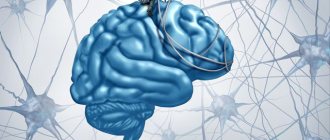Description
It is quite natural that a person does not like to experience the fear of pain, because he understands that it is a harbinger of something threatening. Healthy people treat this adequately and do not make problems out of meaningless feelings. But in the case of sick people, the situation gets worse. A potential carrier of the fear of physical pain panics at the slightest unpleasant sensation.
For example, we can recall adults, sometimes representatives of the older generation, who are about to receive an injection. At the thought of possible pain, they experience real horror, panicking and overthinking themselves with thoughts about the upcoming consequences of such a step. It doesn't have to be an injection. A person may be afraid of getting into an accident while driving, or falling while walking down the street.
This painful condition leads to constant stress in a person. He is afraid either of the existing unpleasant sensations, imagining how they will develop into something more, or of possible pain from any action. You can prove to such a person for a long time that even the bites of a swarm of mosquitoes do not threaten his health in any way, but he will be firmly convinced that after this he will end up at least on his deathbed.
Description and mechanism of development
Fear is a natural human reaction to danger. Therefore, people may be afraid not only of serious operations, but also of painless procedures.
Those who suffer from algophobia at first simply become anxious and worried. Those whose disease has begun to progress begin to experience autonomic disorders that require the intervention of a psychotherapist.
As the disease develops, it changes a person’s behavior. He becomes suspicious, withdrawn, and considers every situation from the position of receiving a painful blow. Those moments where he experienced acute pain, he diligently avoids and strives never to repeat.
Additional Information. Doctors spoke about interesting observations of patients suffering from alginophobia. It turns out that a person is afraid not only of pain, but more of the fact that unpleasant emotions will never leave him. Also, the individual often worries that he will lose control of himself; for him, as for many people, this is unacceptable. In some cases, a person is worried that he will be considered weak, helpless, thereby being humiliated and ridiculed.
Diagnostics
Today, there are many techniques that allow you to identify phobias in time and successfully combat them. But the phobia of fear of pain is quite secretive, and is often detected only in very advanced forms. The main reason is that its symptoms are also characteristic of other pathologies, which greatly complicates diagnosis.
Each patient's phobia manifests itself differently. Therefore, the behavior of several patients may differ from each other. Often, patients with progressive algophobia gradually limit their social circle, refusing to attend social events, friendly meetings, and try not to leave the house without a good reason. For the initial stages of the disease, such a measure is quite helpful, but a gradually progressing phobia drags the patient into depression and insomnia, forcing him to fear pain even within his own home.
Their environment plays an important role in identifying and treating such patients. The carrier of a panicky fear of pain can be recognized by characteristic reasoning. He believes that if he attends a particular event, he will experience a sensation that will harm one aspect of his health, so it is better to refrain from such a visit. If he insists, his fear may develop into panic, horror or rage against his interlocutor.
Fear of pain: what are you really afraid of?
People are afraid of pain in different situations: dental treatment, donating blood for tests, loss of virginity in girls, ear piercing, etc. But few people can decipher their fear. At best, people add that they are afraid they will not be able to withstand the pain. That is, they are afraid of losing consciousness. But if you think about it, this is not the only fear that is hidden.
The pain won't stop
It can not be so. If the pain is so severe that it cannot be tolerated, you will pass out and not feel anything. And if the pain is severe but tolerable, then you will find the strength to call for help, see a doctor, or eliminate the source of the pain yourself.
It's actually a fear of helplessness. You don't believe in yourself and don't trust other people. You think that neither you nor anyone else can help you. Think about where this mistrust and uncertainty comes from. Who or what formed such a picture of the world in your head.
Fear of death
The fear of death is common to all people. This is natural, in principle, like death itself. This is just one stage in the natural cycle of life. Consider whether you are increasing the likelihood of death due to your fear. For example, you are afraid of dying under the surgeon’s knife, and therefore you are postponing an important operation. If this is your case, then you need to fight the fear of death. To do this, you need to disassemble it into its components. What may be hidden behind it: the meaninglessness of life, distrust of the world, problems in the field of communications, childhood psychotrauma, fear of aging.
I will not be able to continue living a full life
Pain is associated with disability and restrictions. But what is a fulfilling life for you? What exactly are you afraid of losing? Are you living a full life now when, because of your fear, you refuse to meet with friends, you cannot build a personal life, or you are forced to quit your job? Life consists of ups and downs, every person has situations of despair and situations when he is not in the best shape. This is fine. You need to accept it and be ready to fight the difficulties.
Humiliation
If a person got sick, broke his arm or experienced other pain, then this did not make him a less worthy representative of society. Pain is associated with humiliation only among perfectionists and people with high demands on themselves and others.
How not to be afraid of pain and humiliation: Realize that being angry with yourself because of pain only leads to more tension and tightness of the muscles, which increases the pain. Allow yourself to be imperfect and accept yourself, your body, your organism.
Losing control
What does "lose control" mean? Will your mind turn off and you won’t be able to think rationally? In this case, reflexes and instincts will come to the rescue, and they are always interested in your safety.
Signs
To understand how to overcome the fear of pain, you need to clearly identify all the existing symptoms that will indicate the form and neglect of this disease. Despite the uniqueness of each individual, they all have common features:
- during an influx of experiences, the patient feels nausea, rapid heartbeat, high blood pressure or tachycardia;
- when a potential patient is afraid of something, it is difficult for him to breathe, his face becomes covered with beads of sweat, and his skin turns red;
- hands tremble, general weakness is felt, and legs buckle while walking;
- after several such attacks, the patient begins to acutely feel the approach of death, which only worsens the situation.
Most alginophobes are well aware of their condition and try to control themselves, despite the belief that they will not be able to survive even the slightest pain. This disease is insidious in that it can provoke the development of other phobias, so you cannot do without the help of a psychologist and psychiatrist. What is the difference between them is not so important. Any of them can correct the development of a phobia, preventing more severe complications affecting the psyche and physical health.
Causes and symptoms
Unfortunately, modern society is becoming more and more susceptible to obsessive illogical states - general sensitivity increases, and it becomes more and more difficult to endure painful sensations.
Pathological development is typical for people with high emotional sensitivity and can occur for the following reasons:
- Previously experienced pain;
- Hearing exaggerated stories or experiences retold in the media.
Algophobia has similar symptoms in all people who are susceptible to it. In different cases, the intensity of the expression of symptoms differs - it depends on the stage of the phobia:
- Hand tremors;
- Weakness in the legs;
- Deterioration of general condition;
- Increased sweating;
- Temperature changes - from hot to sharp cold;
- The appearance of signs of difficulty breathing;
- Nausea and vomiting;
- Increased heart rate;
- Increased blood pressure;
- Fear of death or fear of going crazy.
If you are faced with an unpleasant condition, you need to understand how to stop being afraid of pain. Diagnosing the disease on your own is very difficult - so you should consult a specialist!
Causes
Psychologists believe that modern people are especially sensitive to pain. They closely monitor the slightest changes in general well-being and immediately treat any deviation from the norm. This is typical only for today. The generation that existed about 100 years ago was more indifferent to this factor and was not afraid to risk their own health, relying on the principle of natural selection.
Thanks to the development of science and technology, the current generation is carefully protected from many of the dangers of antiquity. Humanity has become so accustomed to safety that now any deviation from the norm provokes the development of new phobias.
But not everything is as simple as it seems. Fear of physical pain alone is not enough to recognize the presence of pathology. This requires the presence of several factors:
- Increased level of susceptibility. There is a type of people who worry a lot about the slightest thing. Their favorite habit is to scroll through their heads all the options for the development of the current situation, and most of them will certainly not be very good. As a rule, this is due to a child's tendency to remember bad situations and, over time, dilute them in his head with non-existent details. Having gone through all the stages of growing up, a person loses this character trait. But sometimes it remains, providing fertile ground for the development of psychological deviations.
- Having similar experience. Having experienced unpleasant sensations in a specific situation, the human subconscious will warn its owner against repeating the unwanted moment. For example, we can recall a completely everyday situation. If a patient donates blood to an inexperienced laboratory technician, he may be unaccustomed to looking for veins for a long time and accidentally snag parts of the tendon. The person will experience severe pain and will be wary of such procedures in the future. But in the case of an alginophobe, it will be difficult to prove that the problem lay in the lack of knowledge of the young laboratory assistant, and not in the procedure itself. Therefore, the mere mention of repeating blood donation will only cause horror and rejection in him.
- Society's opinion. The whole meaning of this factor will be demonstrated by one situation. Under the dentist’s door there is a line waiting for an appointment, and in it is a potential alginophobe. The screams and screams of other patients can be heard from the office. The carrier of a phobia of fear of pain will begin to stress himself out, wondering how he will withstand such torment. He won’t even remember that he came for a different reason and, accordingly, will experience different sensations.
Causes of algophobia
Fear of crowds - what is this phobia called and how does it manifest itself?
The fear of experiencing physical pain does not arise on its own. The following reasons are identified:
- The first place among all reasons is occupied by negative experiences in the past. Just one incident of acute physical pain is enough, and a person will retain the memory of this incident in his consciousness. Already at the mention of it, pain signals will arise in the body.
Painful experience of visiting a doctor
- Strong emotionality. The person is impressionable and takes everything to heart. He worries about trifles, and regards the slightest blow as a serious injury.
- Low pain sensitivity threshold.
- Other people's experience. When a person learns in vivid detail the procedure for carrying out painful medical procedures, studies stories about fractures, injuries, he may experience a panic attack.
Treatment
This phobia has many names, which make it difficult to find a cure for the fear of pain. But few people know that specialists use the same methods to treat it: certain medications, psychotherapy and special training. In more advanced cases, when the phobia is complemented by depression, anxiety and other similar issues, one cannot do without the help of a psychologist and psychiatrist. They will understand immediately what the difference is between a normal situation and a severe form of the disease and will help to quickly eliminate the disturbing symptoms.
How to stop being afraid of pain?
Algophobes with vegetative symptoms are prescribed sedative homeopathic drugs or tranquilizers. The duration of treatment and dosage are prescribed individually, depending on the degree and form of the disease. If fear of pain is accompanied by depression, antidepressants are used to improve the production and metabolism of serotonin.
Psychotherapeutic correction is considered an effective method of getting rid of algophobia. Popular techniques include: auto-training, hypnosis, graded desensitization, neurolinguistic programming.
Medicines
A similar method of treatment is based on the regular use of psychotropic substances, with the help of which stability of previously floating mood, relief of symptoms and improvement of the patient’s behavior are achieved. Independent use of this method is strictly prohibited, since the patient will not be able to combine drugs correctly and not exceed the permissible doses:
- Antidepressants improve mood and tone the body, helping to temporarily forget about apathy and general weakness. The correct dosage has a beneficial effect on logical thinking and prolongs the period of relative calm. “Paroxetine” and “Amitriptyline” are often found in recipes.
- Drugs from the sedative series relieve tension at the mental level, calming the painful consciousness without a hypnotic effect. Doctors recommend tinctures of lemon balm, motherwort, valerian, and so on.
- Tranquilizers that help relieve the current symptoms of a phobia: irritation, restlessness, anxiety, poor sleep patterns. The most popular are Phenazepam, Gidazepam and Clonazepam. But despite their apparent harmlessness, experts warn against self-medication, urging not to risk your own health.
Treatment Options
The classic type of therapy includes treatment by a psychiatrist and medication. Treatment is selected individually for each patient, based on the level of neglect of the condition, cause of occurrence, age and clinical picture.
- Conversation with a psychotherapist. The patient talks about his anxiety, worries, fears and anxieties. The specialist makes an in-depth analysis of the patient’s actions at the time of the onset of a panic attack. The psychotherapist corrects the patient’s behavior and explains how to behave during a panic attack.
- Autotraining. A way to overcome fear on your own. To this end, you need to spend about 7 minutes every day, practicing 3 times a day, namely in the morning, afternoon and before bed. The main thing is that during the training it is calm, quiet, the person can relax, take a comfortable position and calm down. It is important to choose a suitable method of self-analysis and self-hypnosis.
- Hypnosis. If you decide to use this method of therapy, it is better to seek help from a qualified specialist with extensive practice, particularly in this area. This type of treatment comes down to putting a person into a hypnotic sleep and instilling in him the correct model of behavior.
- Art therapy. The patient is asked to draw out his fears. The psychotherapist analyzes the drawings and uses them to determine the cause of fear and options for counteraction.
- Auxiliary therapy is represented by physiotherapy, gymnastic exercises and hardening.
- Drug treatment may include taking the following drugs:
- antidepressants - relieves lethargy, emotional stress, increases physical activity (for example Sertraline);
- tranquilizers, in particular Phenazepam and Gidazepam, help normalize sleep and relieve irritability;
- sedative medications - help reduce emotional stress, do not have a hypnotic effect (tinctures of valerian, motherwort and lemon balm have proven themselves);
- a complex of vitamins to improve the performance of the nervous system and overall strengthen the body.
Now you know what fear of pain is. As you can see, a large number of people are afraid of pain, but not everyone develops this condition into a pathology. You need to understand that any phobia interferes with the normal process of life, which means it needs to be fought. If you can’t cope on your own, do not hesitate to seek help from a qualified specialist.
Psychotherapy
“If I’m afraid of pain, what should I do?” - people often ask. In some cases, when the patient is contraindicated in taking necessary medications, psychotherapy is prescribed. Experts try to limit interference in the painful consciousness, giving preference to auto-training, which the patient can perform independently, only with minor adjustments from the supervising doctor.
If a sick person cannot cope with auto-training, then they are replaced with behavioral therapy under the supervision of the attending physician. He regulates the entire process, using hypnosis for greater impact.
Behavioral therapy creates a different human attitude towards the world around us, clearing it of any manifestation of fear. During therapy, the specialist carefully studies human behavior at the time of the next attack and helps the patient independently analyze these details. As a result, he understands what triggered the exacerbation of the phobia, and tries to avoid similar mistakes in the future.
What is algophobia?
Algophobia is a mental disorder in which a person experiences intense fear of any pain, even minor pain. This includes both pain received from the outside (bruises, cuts, burns) and those that arise inside the body (for example, during illness).
Pain is unpleasant for no one, but most people can tolerate minor manifestations of it without much difficulty. Algophobes cannot bear even the slightest pain. In addition, the very thought of pain frightens them. Therefore, they try their best to avoid any situations where there is a possibility of experiencing painful sensations.
Such people do not go to doctors, even when they are sick, and avoid sports competitions, public events, nature trips and other things that, in their opinion, threaten them. In especially severe cases, the algophobe is afraid to leave the house again, so as not to accidentally experience pain. Naturally, the life of such a person turns into a dull, depressive existence. Anxious, gloomy thoughts haunt him, aggravating an already difficult situation.
If the disease is not treated, it will progress further. Alginophobia refers to the type of phobias that lead to the development of other mental disorders - panic attacks, severe depression, neuroses, hypochondria.
Description of the phobia
Fear of pain is a natural human instinct, which manifests itself as a result of the occurrence of dangerous situations that threaten life. Thanks to the release of the hormone adrenaline, the brain begins to work intensively to recognize possible danger. Most people manage to get rid of fear naturally, but there are individuals who are so afraid of the mere possibility of pain that their lives change dramatically. A person begins to lead a sedentary, antisocial lifestyle with algophobia.
Allophobia manifests itself suddenly and is destructive. A person suffering from this phobia is unable to overcome fear alone, and ignoring the problem can lead to unpredictable consequences.











